Key takeaways:
- Understanding and adhering to submission guidelines is essential for publication success, as even minor errors can lead to rejection.
- The peer review process is a critical learning opportunity, where feedback can enhance the quality of your research and resilience as an academic.
- Effective communication with editors and reviewers, characterized by clarity and professionalism, fosters positive relationships and collaborative exchanges.
- Patience is vital in academic publishing; the unpredictable timelines can cause anxiety but are part of a thoughtful review process.
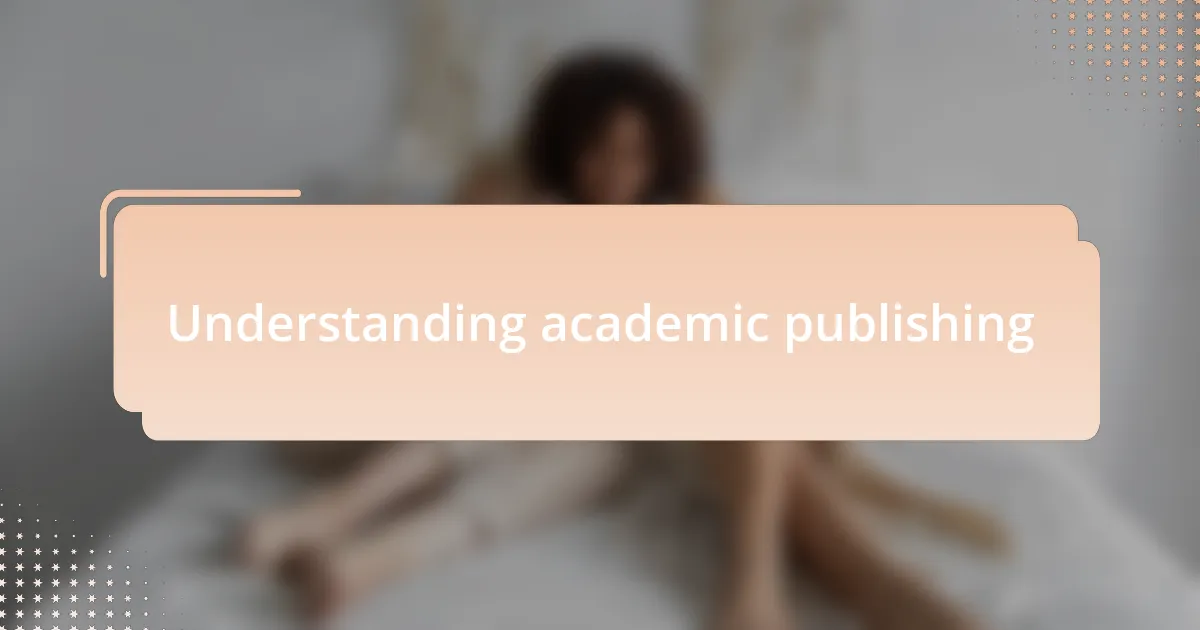
Understanding academic publishing
Academic publishing can often feel like a daunting labyrinth. I remember my first submission; the mix of excitement and anxiety was palpable. Why do they make the process so complex? Each journal has its quirks, and understanding their submission guidelines can make or break your chances of being published.
Navigating the peer review process is another layer of intricacy. When I received my first round of reviews, I felt like I had been punched in the gut—critical feedback can sting. Yet, I learned that constructive criticism is a part of growth; it challenges us to refine our work. Have you ever considered how feedback can transform not just your manuscript but your entire perspective on your research?
The timelines in academic publishing can be frustratingly unpredictable. I once waited over six months just to hear back about a submission, wondering whether my article had disappeared into a black hole. This experience taught me patience and the importance of planning ahead. Have you thought about how this uncertainty can influence your research timeline? Balancing your expectations will help you keep your focus and motivation during what can be a lengthy process.
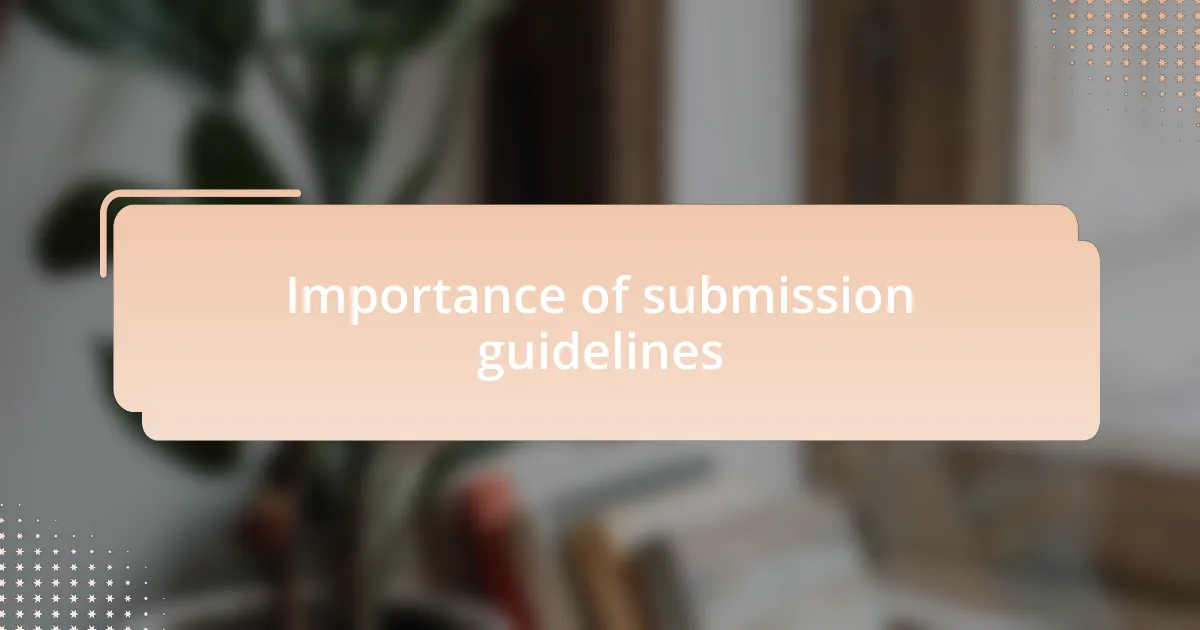
Importance of submission guidelines
Understanding and adhering to submission guidelines is crucial in the world of academic publishing. I recall a colleague who, in their eagerness to submit, overlooked the formatting requirements. Their paper was promptly rejected, and they learned the hard way that even minor details matter. It’s like preparing for an exam; if you skip studying the syllabus, you might fail despite knowing the material inside out.
Submission guidelines often reflect a journal’s specific focus and audience. I remember revising my manuscript based on feedback from a previous journal, only to realize that my adjustments still didn’t align with the new journal’s criteria. It was a painful reminder that every journal has a unique identity, and understanding this can sharpen my focus on what editors truly want. How many times have we assumed our research fits somewhere without truly looking deeper into the journal’s aims?
Ignoring submission guidelines can diminish your credibility as a researcher. When I first crafted my manuscript, I didn’t fully appreciate how presenting a polished, well-structured proposal influenced an editor’s initial perception. A clean, well-organized submission not only showcases your work but also communicates your professionalism. Have you ever thought about how attention to submission details cultivates trust between you and the editorial team? It’s a vital step that can significantly boost your publication journey.
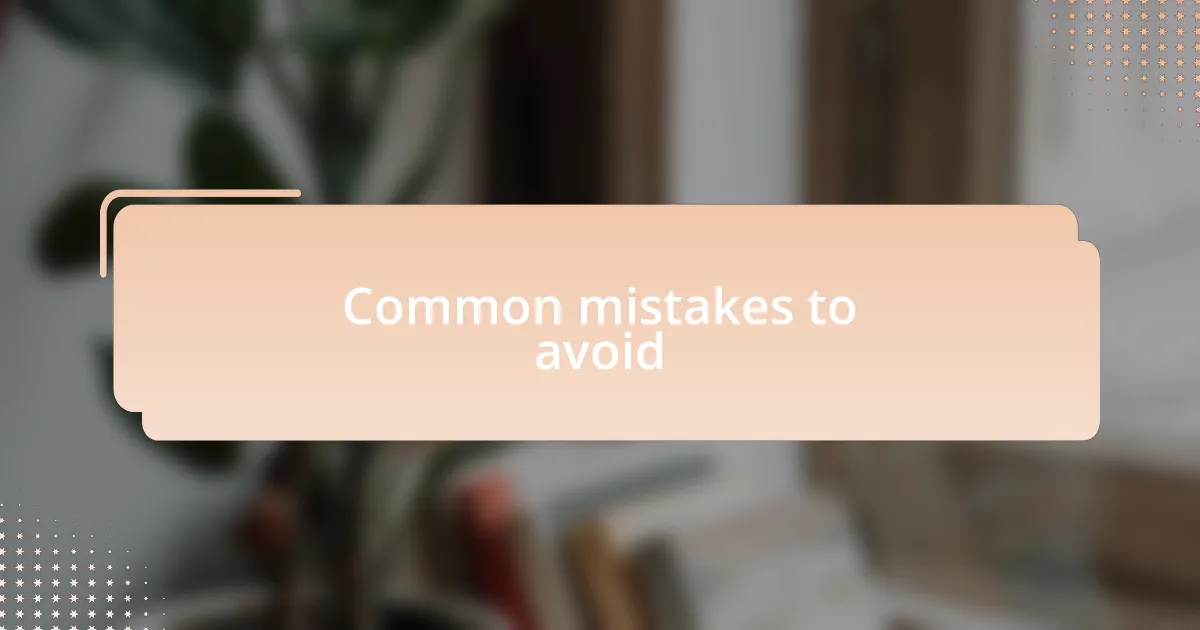
Common mistakes to avoid
One common mistake I see frequently is submitting work before seeking feedback from peers or mentors. Early in my academic career, I rushed a paper out of excitement, only to realize later that a fresh set of eyes could have highlighted crucial flaws. Have you ever experienced that sinking feeling when you spot an error post-submission? Taking the time to gather insights from others can make a world of difference.
Another pitfall is failing to tailor your manuscript to the specific audience of the journal. I vividly recall submitting a study that I believed was relevant, only to receive comments indicating it was misaligned with the journal’s focus. It felt disheartening, but it taught me that understanding the readership is just as important as the content itself. How often do we underestimate this aspect, thinking our research is universally applicable?
Lastly, I can’t stress enough the importance of proofreading. I once submitted an article that was riddled with typos. Though the research was solid, the carelessness left a poor impression on the editors. It’s a stark reminder that no matter how groundbreaking your findings may be, presentation matters significantly. How many times do we let simple mistakes overshadow our hard work? Taking that extra moment to ensure clarity and polish can elevate your work dramatically.
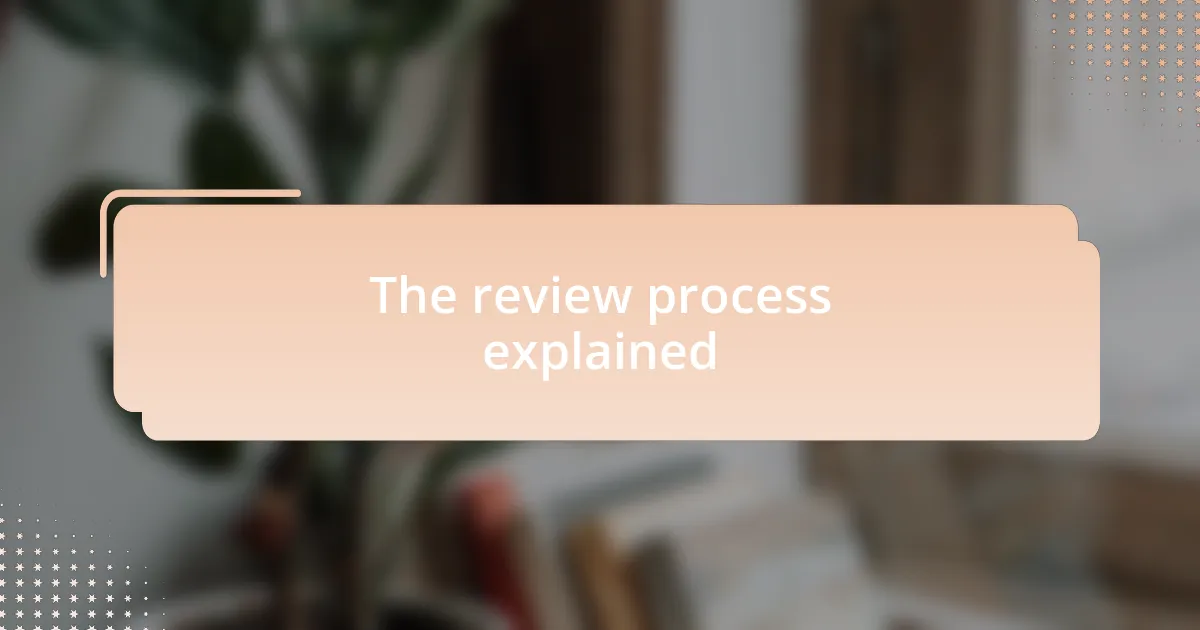
The review process explained
The review process can often feel like a black box, but it’s crucial to understand what happens behind the scenes. After submission, your manuscript typically undergoes initial screening by the editorial team. I recall the anticipation I felt waiting for the first update, only to realize that this stage filters out submissions that might not fit the journal’s scope—proof that alignment matters before you even get to the review phase.
Once your paper passes the initial check, it enters peer review, where experts evaluate its quality, validity, and significance. I remember receiving feedback from a reviewer that challenged my assumptions; their insights were jarring but ultimately invaluable. It made me wonder—how often do we grow as researchers through the critiques of others? This stage is not just a formality; it’s a learning opportunity that can deepen our understanding of our own work.
Finally, you receive feedback, which could lead to acceptance, revisions, or rejection. Each option stings in its own way, doesn’t it? I once faced a rejection that felt like a personal blow, but it became a stepping stone for improving my work. Embracing this feedback, regardless of the outcome, fosters growth and resilience. Remember, it’s not just about acceptance; it’s about becoming a better academic through each experience.

Tips for effective communication
Effective communication with editors and reviewers is crucial in academic publishing. I’ve learned that clarity is your friend; concise yet thorough messages can pave the way for smoother interactions. When I submitted a follow-up inquiry about my paper’s status, I made sure to be both polite and succinct. It paid off—I received a prompt response that put my mind at ease.
Remember that tone matters just as much as content. Early in my journey, I sent an email that was a bit too casual, and I quickly realized it might not have conveyed the professionalism I intended. Adopting a respectful and formal tone can help establish goodwill, especially when you’re seeking clarification or discussing revisions. Have you ever considered how your choice of words might affect the reader’s perception?
Don’t shy away from expressing appreciation. I make it a point to acknowledge the time and effort that reviewers invest in evaluating my work. A simple thank-you can go a long way, showing that you value their expertise. It can turn what might feel like a transactional process into a more collaborative exchange—one where both parties are encouraged to learn and grow together. How powerful is that?
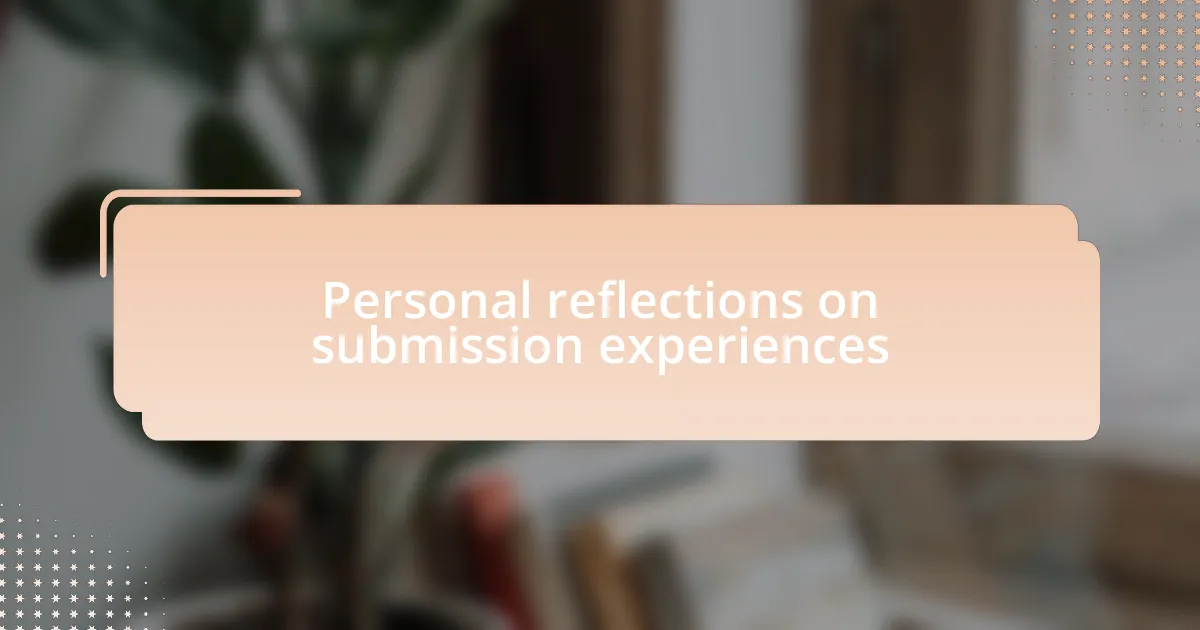
Personal reflections on submission experiences
Reflecting on my own submission experiences, I recall the anxiety that crept in as I hit the “submit” button for the first time. It was a mix of excitement and fear—would the reviewers appreciate my research, or would I be met with silence? I learned that this overwhelming feeling is entirely normal; many academics share this same trepidation.
One particular submission stands out in my memory. I received feedback that felt devastating at first; the reviewers had many critiques of my arguments. But looking back, I see how those critiques ultimately strengthened my paper. It made me realize that rejection can be an essential part of the process—a stepping stone rather than a stumbling block. Have you found yourself in a similar situation where feedback, though initially difficult to digest, led to growth?
I believe that understanding the timeline of the submission process can alleviate some stress. Early on, I was unprepared for the waiting game. After one submission, a solid three months passed without any updates, and I felt like my work had been forgotten. Now, I remind myself that patience is part of the journey—it’s about allowing time for thoughtful reviews. What lessons have you learned from the waiting periods in your own submissions?